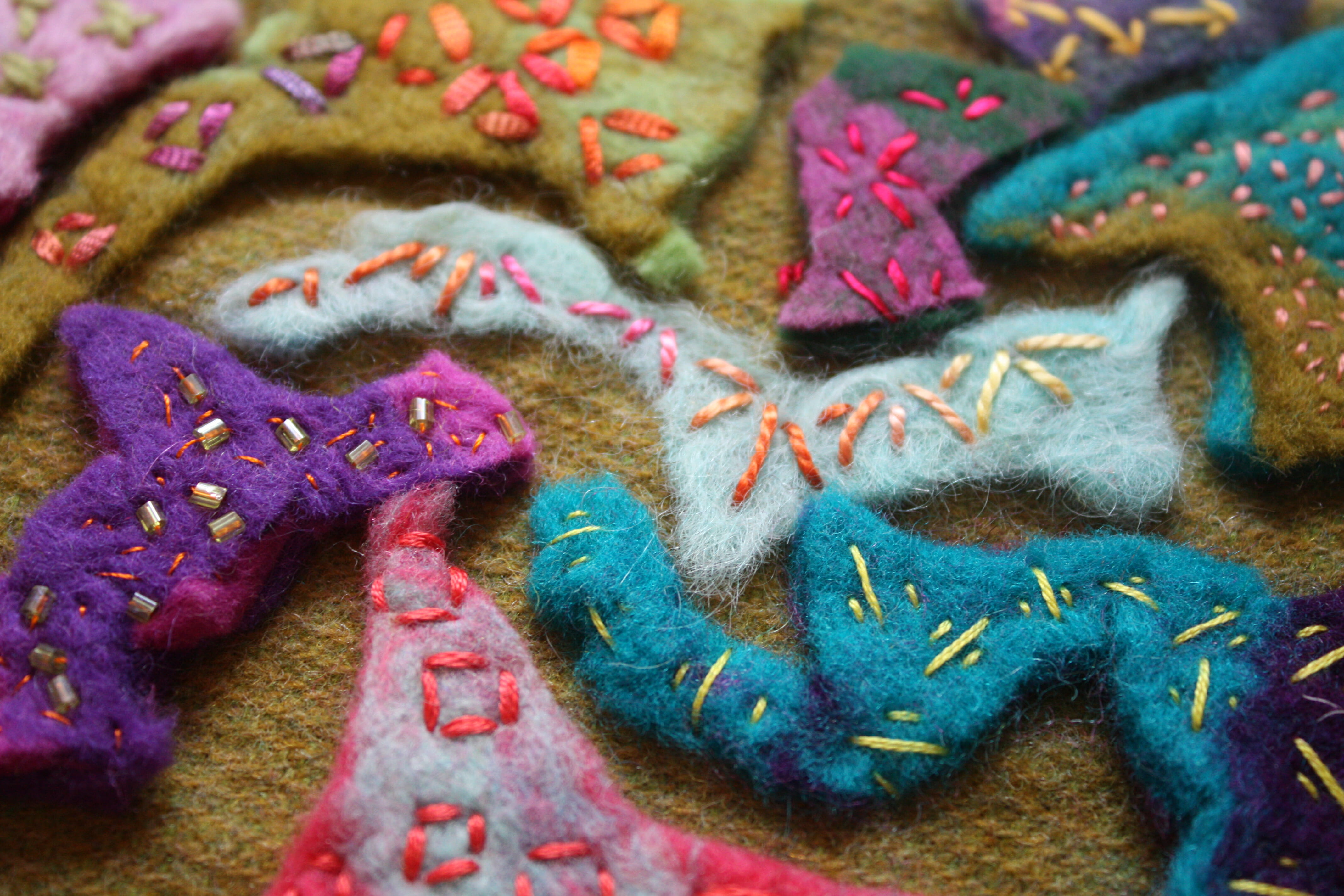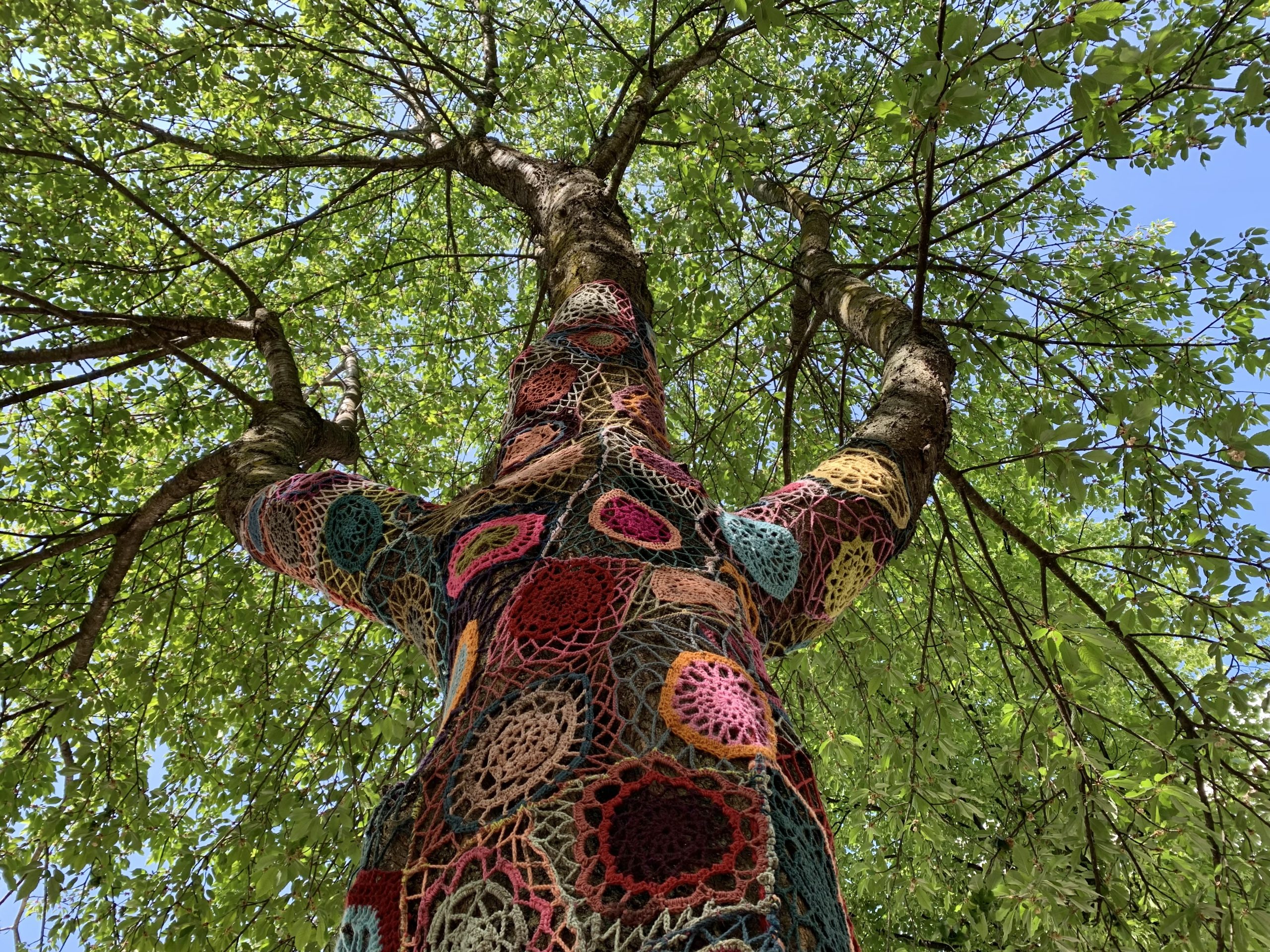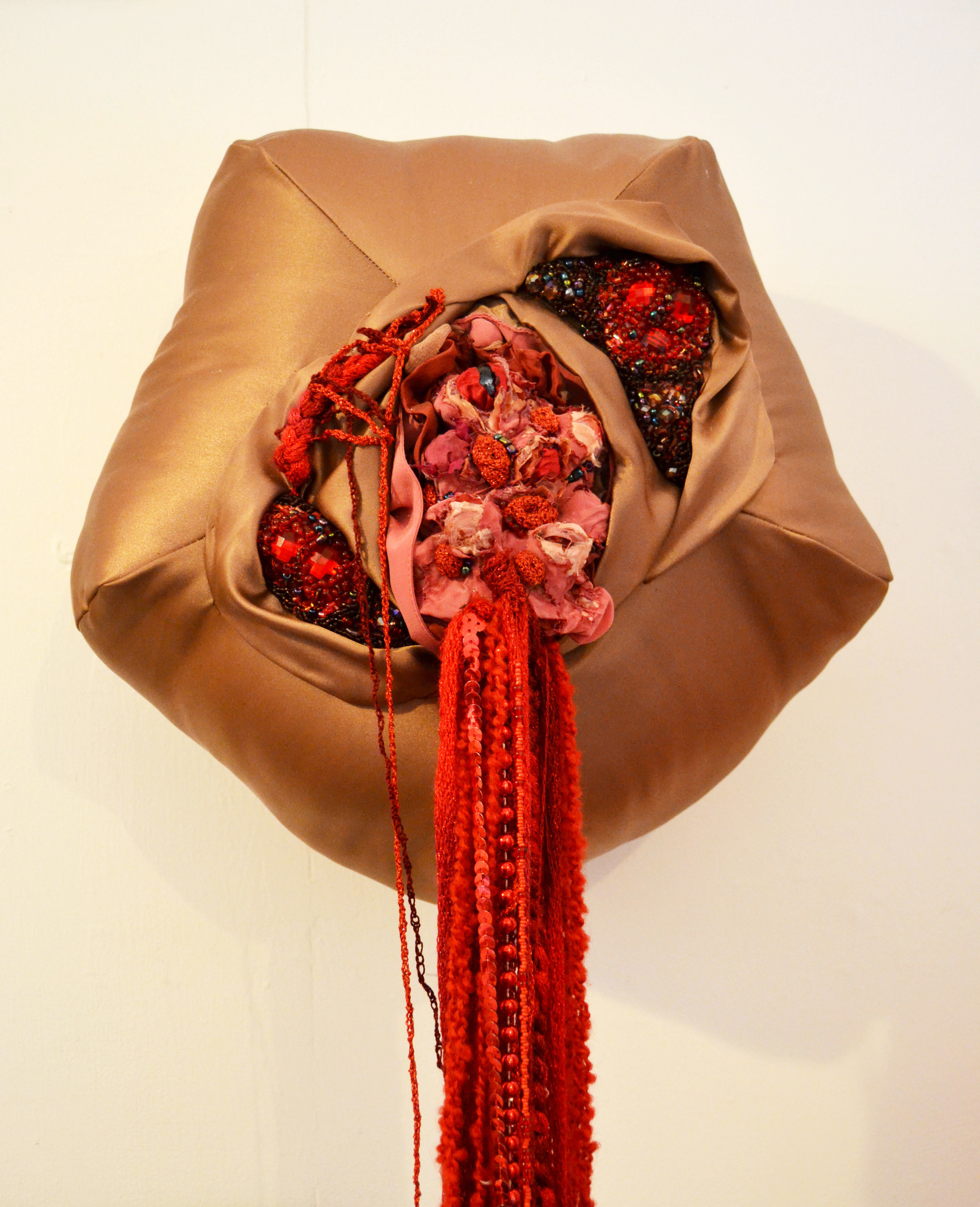
Welcome to the Ailist, where we look inside the world of textile arts with artist profiles, real life experiences at shows and workshops to help you plot your own path in this creative sector! I’m Ailish Henderson, thank you for joining me!
As a practitioner in the arts, I have taught many workshops over the years; from felt making to product design, I have pretty much taught it all. I thought that I would discuss with you all a few of the techniques I have taught and do indeed currently teach – maybe you will find yourself attracted to a new idea or technique.
Self Care – not just a fashion
You may have noted the rise in mental health awareness over the past few years. This is such a positive thing, as many practitioners in the arts will tell you, we always knew making mended us – now maybe you are experiencing it too!
In general it is not the technique itself which ignites the emotional mental mending for oneself, it is the act of making, using one’s hands (don’t get me started on this subject, I could go on….) However there are certain methods which are more intent on providing calm than others. Let us take a slow example first….using hand stitching, rather than machine stitch, as a way of working.
Boro Patchwork
Within my own current practice, I have been investigating the topic of repair. When you begin to research, there are so many beautiful textile techniques which are a form of repair but I was drawn to Boro patchwork in particular.
The term “boro” is the Japanese word to describe clothes and household items which have been patched-up and repaired many times; it literally means old cloth. This technique has been passed down for many centuries and is often used to create family heirlooms.
When teaching this as a class, I encourage students to produce a small sample at first. Here is an example:
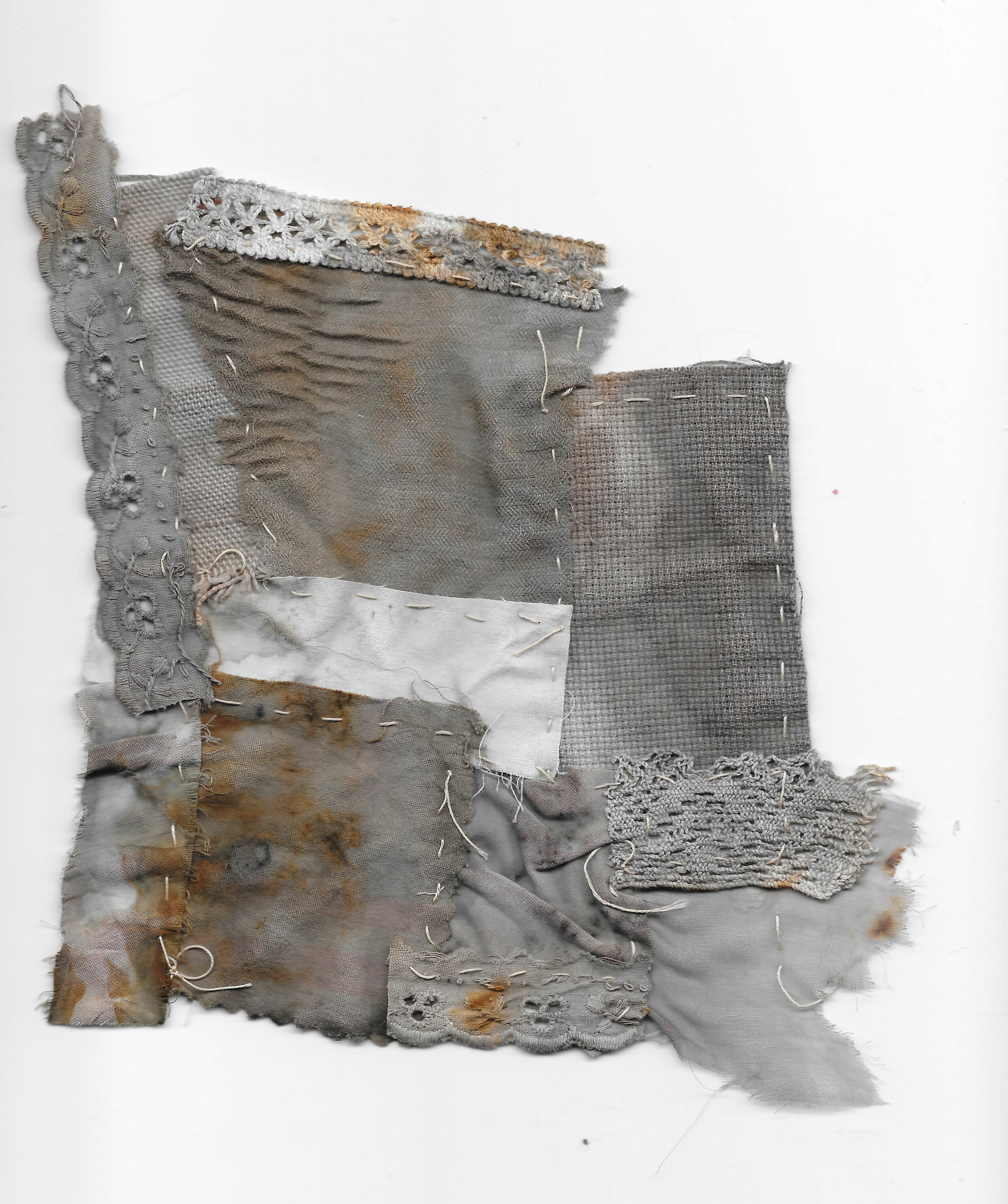
This idea can be extended to many things, I personally connected with it so much that I have built an entire part of my own practice on it. Note the sample above, all the pieces I gave this particular student were hand dyed by myself using a rusting technique. We can make our samples personal to ourselves by first dyeing the materials we use.
There are plenty of articles on our website here which discuss dyeing. Check out this book review I actually wrote recently on Natural Dyeing with Plants. The natural methods are often more time consuming, however they are cheaper in the long run and you are working with nature instead of strong chemicals; a factor I do feel fits with mending oneself too.
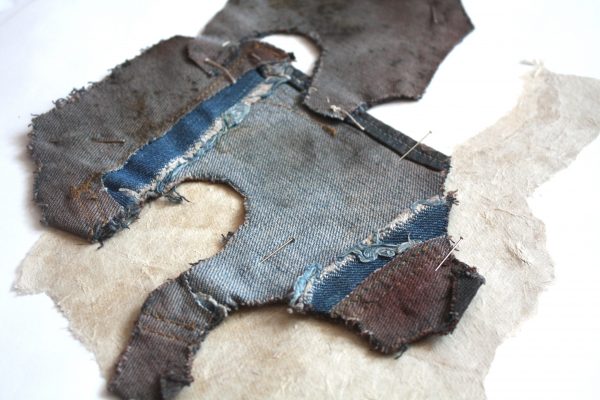
What is exceptional about this technique is that there are no right / wrong ways of doing it. I used denim jeans to produce the sample above – why not have a look around your home for scraps and items now unused – make use of what you have rather than going out to buy new fabrics in.
To read more about this technique, check out Cas Holmes and her article she wrote for us right here.
Contemporary Sashiko and Felt Fusion
Are you more of a contemporary, colourful artist? Using hand stitching techniques and basic stitches, within this workshop I guide students through using the traditional concept of Sashiko stitching, connecting it with a more modern vibe. I provide students with felt pieces, which they connect in their own style to produce something like the sample below:
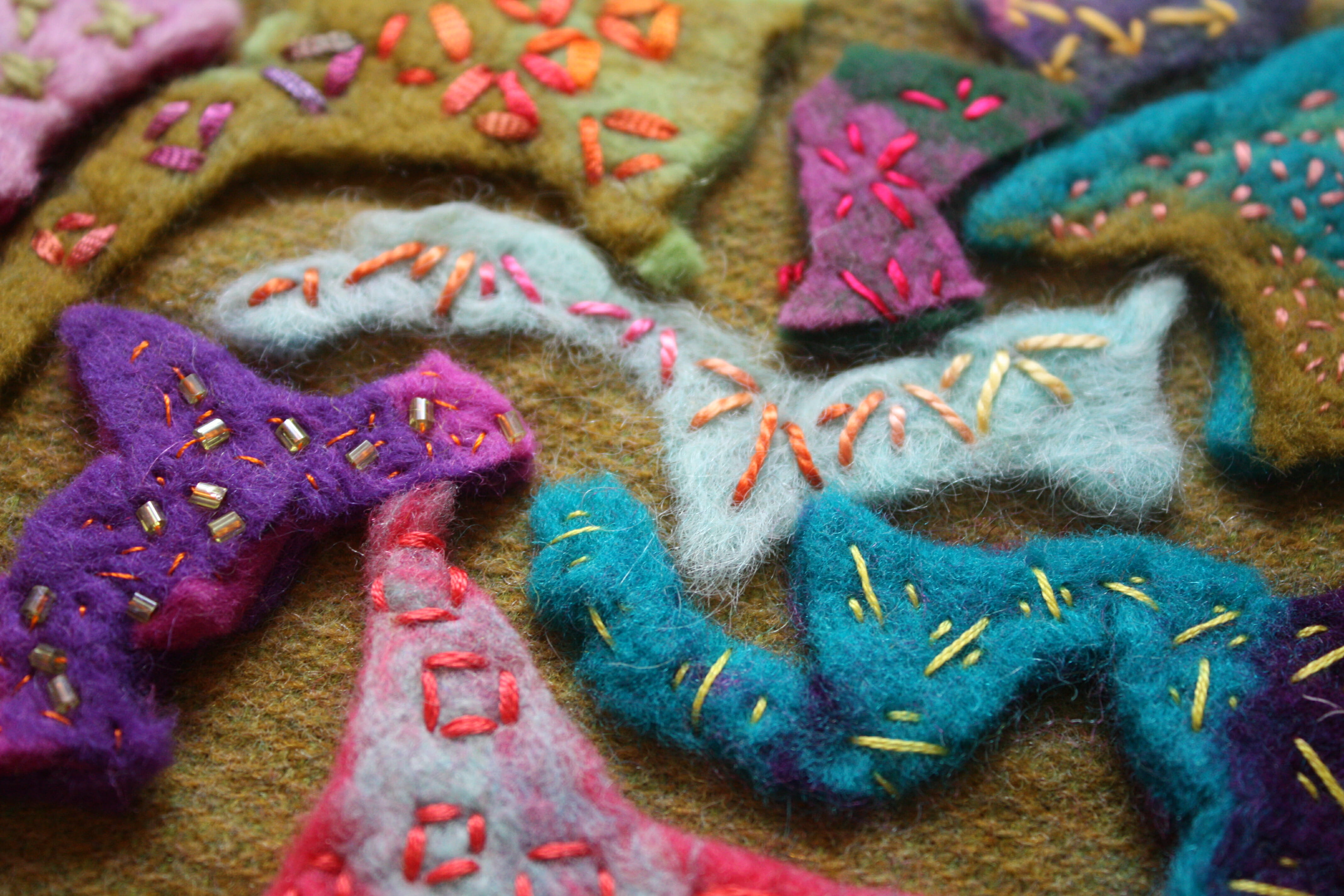
This workshop is special as again there’s no wrong or right answer; it is about connecting with the idea personally and just making your own version. This promotes self esteem as really students cannot compare results – each one will be unique anyway.
Bonded Textiles workshops
Moving on from workshops which are specifically designed to promote a sense of wellbeing, lets go a bit lighter and look at good old fashioned fun. These classes tend to bring out the inner child and actually I have taught these ones to both children and adults alike….
Contemporary Bonding and Fusing
This technique uses a mixture of plastics and other collage materials to create one piece of fabric or 3D item. The possibilities are endless, it is one of those techniques where if you connect with it and enjoy it, you will not want to stop. The basic idea is to melt and bond pieces together. Bond-a-web or a similar fabric holds the pieces together and once it has been melted (usually with an iron) it fixes and melts all the pieces together.
Here are a few examples of what it is possible to make:
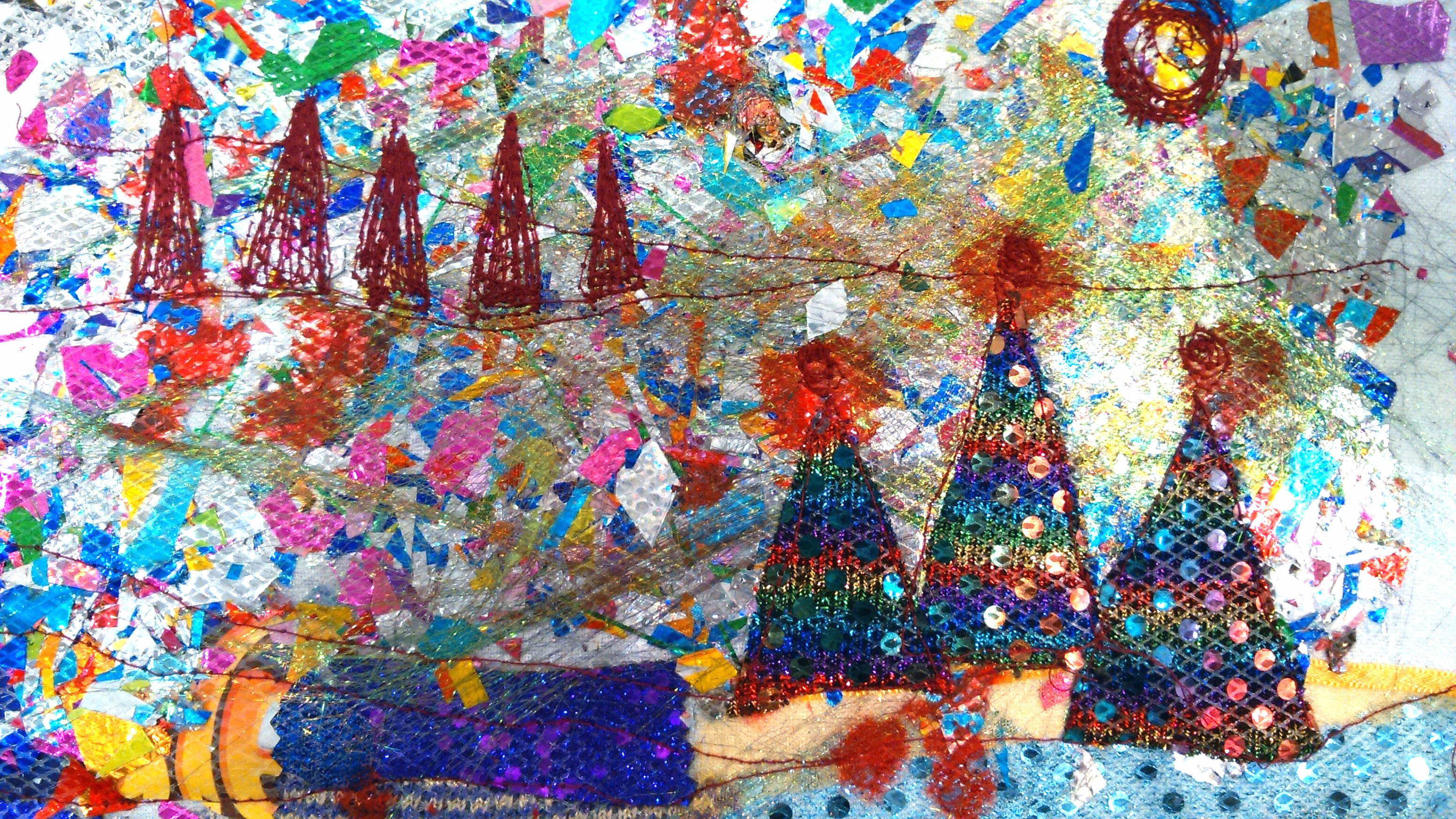
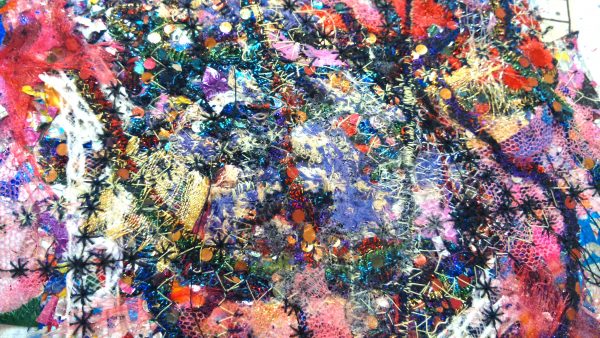
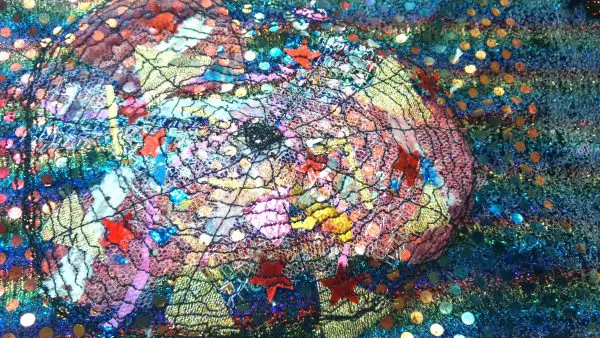
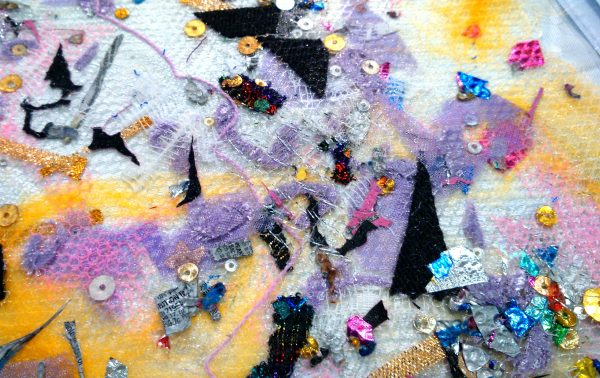
If you enjoy the above idea, you can focus more on creating practical or decorative items with it….
Ethereal 3D Flower
Within this class, learn how to use a variety of plastics such as sweetie wrappers, sequins and voile, trapped in Bondaweb to create new ‘Fabric’. A template has been provided to guide you through making a flower shape from your creation. Once you have stitched together your flower, experiment with a heat gun to ‘distress’ it. Finalise by making your flower into a brooch.
This is what is meant by the term ‘bonded textiles’, as essentially you are learning to bond together a variety of surfaces to create a new surface. I tend to teach it either as a general technique under the ‘bonded textiles / surfaces’ heading, or simplify it by honing in on something you can make with this technique, to show its use. So here is an example of a brooch:
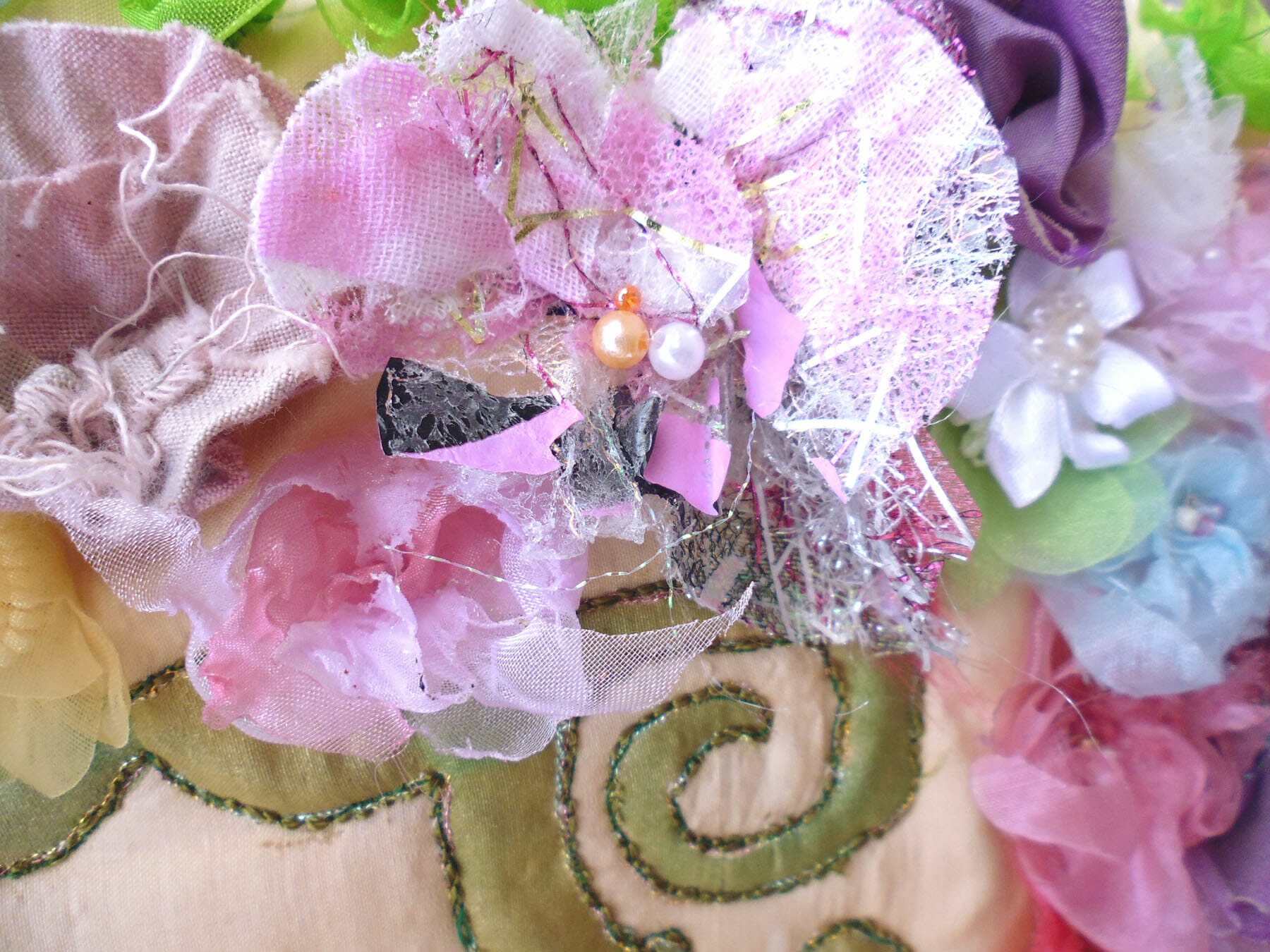
I got a little carried away a few years ago and ended up making a Versailles inspired corset / wearable sculpture using this idea…
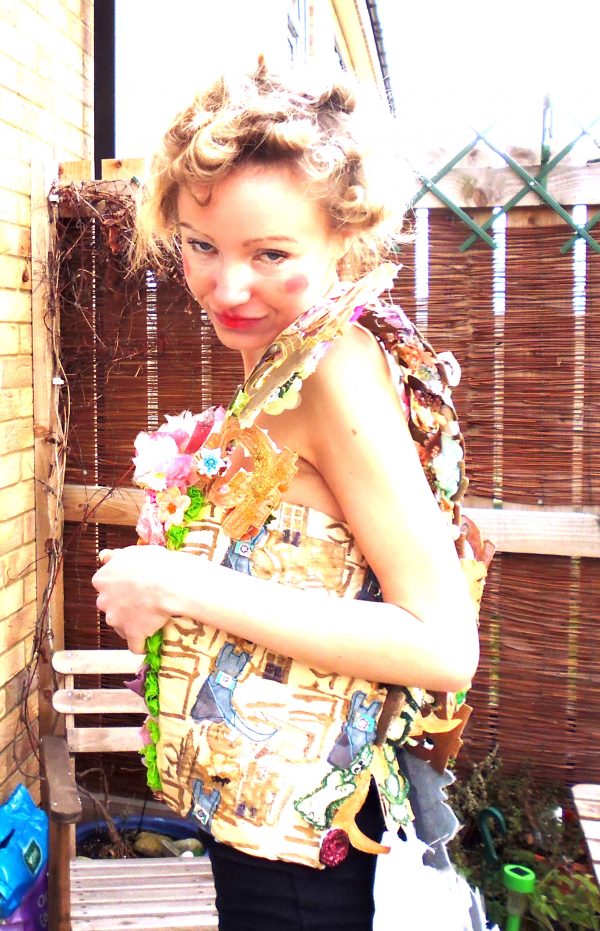
This has been a little insiders view into a world of workshops. If you would like more information, why not visit my website? You will be able to contact me directly through it too. We hope that this has inspired you in some way to get experimental with your textile art.

